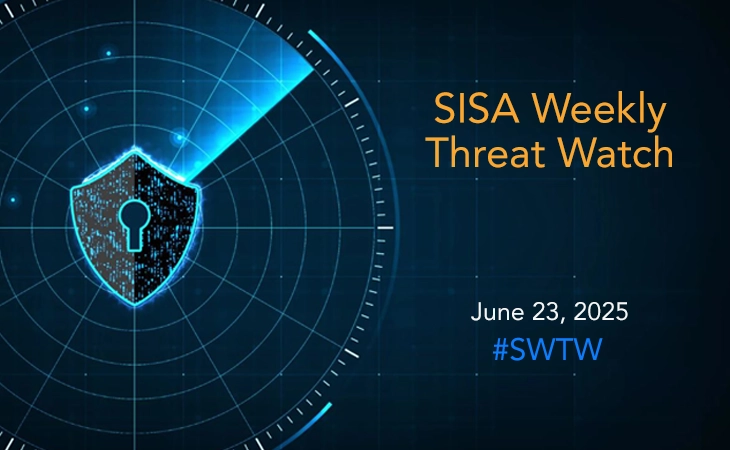

Navigating the Transition to PCI DSS 4.0: Timelines, Goals, and Best Practices
The transition to PCI DSS 4.0 is a complex process that demands careful planning and execution. As we delve into this transition, understanding the timelines, objectives, and strategies is paramount to ensure the continued security of cardholder data.
In the ever-changing landscape of cybersecurity, maintaining compliance is no longer a choice but an imperative. For organizations entrusted with safeguarding sensitive data, such as payment card information, adhering to industry standards is the bedrock of trust. The Payment Card Industry Data Security Standard (PCI DSS) designed by Payment Card Industry Security Standards Council (PCI SSC) is currently at a pivotal juncture, transitioning from version 3.2.1 to the formidable 4.0. As we delve into this transition, it is apparent that the stakes are high, and understanding the timelines, objectives, and strategies is paramount to ensure the continued security of cardholder data.
Timelines: The Countdown to Compliance
PCI DSS version 4.0 was released in March 2022, a move aimed at giving organizations enough time to comprehend the updates and start preparing for the transition within their own operational environments. The current version of PCI DSS, v3.2.1, will remain active till it is retired on March 31, 2024. After that, version 4.0 will become the only active version of PCI DSS.
It is also important to note that there are in total 64 new requirements added to the latest version PCI DSS. 11 of these requirements are applicable to service providers only. There are 13 requirements, out of 64, effective immediately for all PCI DSS 4.0 assessments. The remaining requirements are considered future-dated and will serve as best practices until March 31, 2025, after which they become effective. With several critical timelines on the horizon and a host of new requirements, organizations must start preparing now, if not already, to remain compliant and secure.
“From a PCI SSC perspective, this means that PCI DSS 3.2.1 won’t be supported by the Council anymore and there won’t be any more updates or revisions for the old version of the standards after March 31, 2024.”
– Lauren Holloway, Director, Data Security Standards, PCI SSC
Goal of PCI DSS 4.0: Strengthening Cybersecurity
The PCI DSS 4.0 is not just an update; it is a strategic shift influenced by industry feedback. It has been designed with a clear goal in mind: to meet the evolving challenges of the payment industry by fortifying cybersecurity measures. The key objectives of this updated version include:
- Meeting Security Needs: Addressing the constantly changing threats targeting the payment card industry is paramount. Version 4.0 is geared towards adapting to emerging security risks effectively.
- Continuous Security: PCI DSS 4.0 shifts from a compliance “event” to an ongoing process. This dynamic approach encourages organizations to stay secure year-round, adapting to new threats as they emerge.
- Increased Flexibility: This version introduces greater flexibility for organizations, enabling them to achieve security objectives in a manner best suited to their specific operations. The newly introduced customized approach allows entities to design and implement controls unique to their organization, that meet the requirements’ stated ‘customized approach objective.’
- Enhanced Validation Methods: The standard improves existing compliance procedures, including Reports on Compliance (ROC), Self-Assessment Questionnaires (SAQs), and Attestations of Compliance (AOCs), streamlining the validation process.
Addressing the Evolving Threat Landscape
The modern threat landscape is characterized by ever-evolving cyber threats and PCI DSS 4.0 is well-prepared to counter these newer challenges. Some of the significant updates introduced in this version are listed below.
- Authentication: Existing rules around authentication have been enhanced to align with current best practices in cybersecurity. Multi-Factor Authentication (MFA) becomes a mandated requirement for anyone accessing the cardholder data environment, adding an extra layer of access security.
- Phishing Attacks: To combat phishing attacks, PCI DSS 4.0 adopts a two-pronged approach – technical measures to detect and protect against phishing attacks and a requirement for security awareness training that includes phishing and social engineering.
- E-commerce Skimming: Common threats in e-commerce, like Magecart-style attacks, have been addressed with requirements for managing payment page scripts and deploying change detection mechanisms to detect malicious activity on payment pages.
Download the latest edition of our flagship cybersecurity magazine – SISA Canvas and get access to power-packed conversations with industry leaders on all things security and compliance.
Best Practices for PCI DSS 4.0 Implementation
The transition to PCI DSS 4.0 is a complex process that demands careful planning and execution. To navigate this complex process effectively, it is essential to adhere to best practices that streamline the implementation journey. Here are some best practices for effective transition:
- Start Now: Time is of the essence. Do not delay your preparations; every month counts as the deadline approaches.
- Maintain Controls: Keep your existing 3.2.1 controls intact as they will provide a solid baseline for transitioning to version 4.0.
- Understand Requirements: Thoroughly review the change document and consult with internal experts to fully comprehend the implications of the new requirements for your organization.
- Leverage Guidance: The standard itself contains valuable insights, even for those filling out Self-Assessment Questionnaires (SAQs). Make the most of this guidance.
- Choose the Right Validation: Decide whether the defined approach or a customized one suits your organization’s risk profile and objectives better.
- Use Trusted Partners: Collaborate with Qualified Security Assessors (QSAs) who are experts in PCI compliance. Consider investing in PCI professional certification and internal security assessor certification for your team to enhance your internal expertise.
- Communication: Engage stakeholders across the organization and ensure they are aware of the transition. Effective communication fosters understanding and alignment across departments.
- Conduct Assessments: Perform your own assessments upfront to identify and address gaps before your official assessment. Early self-assessments streamline the compliance process.
- Prioritize Security: Make security a continuous process throughout the year, avoiding last-minute compliance rushes. Embed a culture of security within the organization to proactively manage risks.
“Collaborate with your Qualified Security Assessor (QSA) company to develop a compliance roadmap, concentrating on requirements that need immediate attention and those that will lead to full compliance by 2025. Do not hesitate to reach out to your QSA company if you need help or clarification.”
– Adriano Bertoni, Head of Delivery & Principal Consultant – North America, SISA
As we journey through the transition from PCI DSS 3.2.1 to the robust 4.0, it is evident that the security of payment card data is not a static endeavor but a dynamic commitment. With the extended timeline designed to facilitate understanding and adaptation, organizations have a unique opportunity to fortify their cybersecurity posture. By embracing this evolution, organizations can not only ensure compliance but also proactively protect the integrity of payment card data in an ever-shifting digital landscape. Remember, the journey to PCI DSS 4.0 is not just a requirement; it is an investment in the trust and security of customers and the organization.
For a more detailed insight on the PCI DSS 4.0 and how your organization can smoothly transition to PCI DSS 4.0, get in touch with SISA’s compliance experts or watch our latest panel discussion – Transitioning to PCI DSS v4.0.
References:
- https://blog.pcisecuritystandards.org/pci-dss-v4-0-resource-hub
Latest
Blogs
Whitepapers
Monthly Threat Brief
Customer Success Stories

SISA is a Leader in Cybersecurity Solutions for the Digital Payment Industry. As a Global Payment Forensic Investigator of the PCI Security Standards Council, we leverage forensics insights into preventive, detective, and corrective security solutions, protecting 1,000+ organizations across 40+ countries from evolving cyberthreats.
Our suite of solutions from AI-driven compliance, advanced security testing, agentic detection/ response and learner focused-training has been honored with prestigious awards, including from Financial Express, DSCI-NASSCOM and The Economic Times.
With commitment to innovation, and pioneering advancements in Quantum Security, Hardware Security, and Cybersecurity for AI, SISA is shaping the future of cybersecurity through cutting-edge forensics research.
Company
Resources
Quick Links
Copyright © 2025 SISA. All Rights Reserved.
 USA
USA India
India APAC
APAC Middle East
Middle East Global
Global





 Facebook
Facebook Linkedin
Linkedin  X
X Youtube
Youtube





